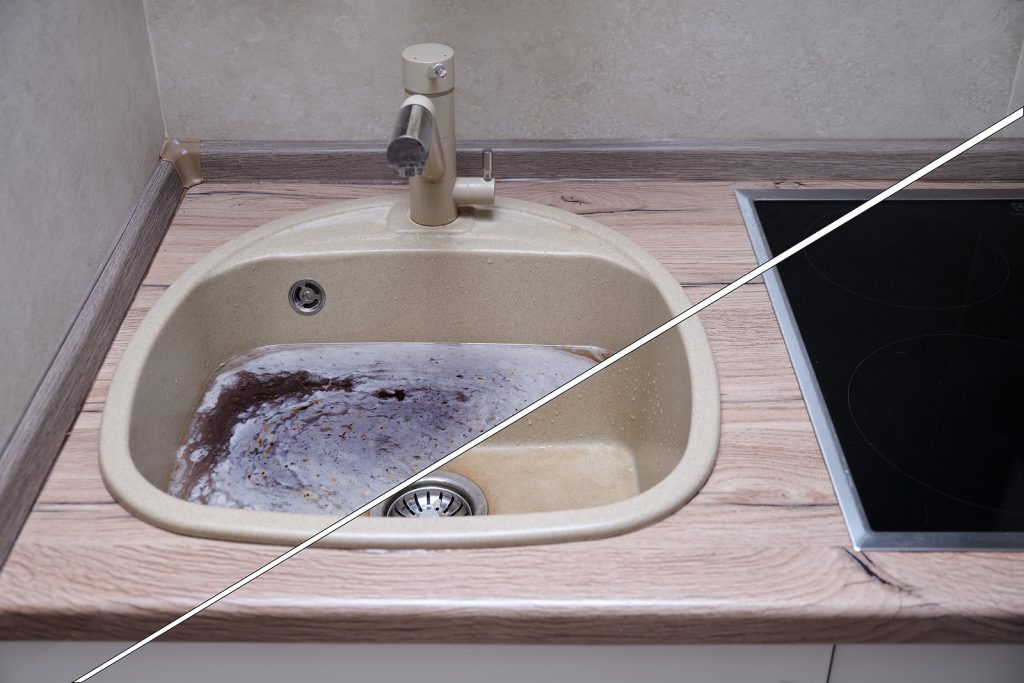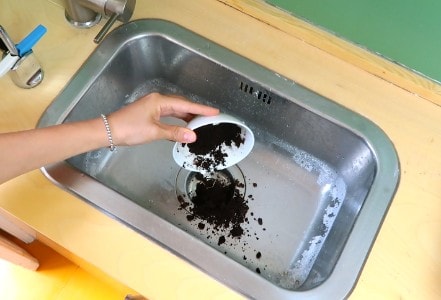We have come across this great article involving How to Keep Your Kitchen Sink from Clogging directly below on the internet and decided it made sense to share it with you here.

An additional tip someone else had given me that I failed to remember to ask the plumber about is to take a container of salt on a monthly basis and also flush it down your commode. They informed me it would keep tree roots from growing toward your pipes. So since I have trees in my backyard I salt the bathroom when a month as well.
Someday last week my kitchen area sink got blocked, while annoying I didn't believe it was going to be a big deal.
I just got the Liquid Plumber I had bought for just such an occasion, and then presto. Nothing.
So we avoid to Wal-Mart, my little girl in her jammies given that she was nearly to head to bed. I located the Draino, my little girl recommended to get two just in case and after the Liquid Plumber had not functioned I though possibly I much better.
Tried it as well as it didn't work, so then I decided to let it truly have a long time to persuade evening. Still in the early morning a clog.
So I call a plumber and he had actually the clog fixed in no time, and he gave me a bit of advice that I am going to be using currently.
He informed me once a week to fill out both my sinks and afterwards allow the water out on both at the same time. He stated the whirlwind action of the water would continue all the way through my pipes and also maintain me from having an obstruction.
He stated as long as you don't put a lot of grease down your drainpipe you need to never ever have a blockage.
So I believed I would share this tip with every one of you. I figure it does not set you back anything as well as takes less than 5 minutes so why not.
Why Your Kitchen Sink Keeps Clogging
If your kitchen sink seems to clog constantly even after you plunge or snake it, then there’s probably something in the pipes beneath it. Unfortunately, several of the materials homeowners flush down their kitchen drains can build up on pipe walls over time until they create stubborn, pervasive clogs.
Obviously, the first thing to do is stop making these clogs worse! To do that, you’ll have to figure out what you’re flushing and how to deal with it differently. Here are the four main reasons why your kitchen sink keeps clogging, and why they’re an issue in the first place:
F.O.G
Fats, Oils and Grease. These are the three most infamous kitchen sink cloggers out there. Unfortunately, they’re also the most common. The problem is, these substances are all perfectly suited to clogging drains. For one thing, they’re sticky. FOG rarely makes it all the way down your drain; instead, they tend to get stuck to the sides of your drains partway through. Worse, once they’re stuck to the sides of your pipes… they harden.
Coffee grounds
This is another bummer: coffee grounds are terrible for kitchen sinks. Even if you have a garbage disposal, you should neither dump grounds down your sink nor even allow them to drain accidentally. Once they’re in your pipes, coffee grounds can collect over time to make particularly stubborn and pervasive clogging problems–especially if they catch other particles on their way down. The problem with coffee grounds has to do with what happens when they get wet.
Think about what happens when you pour water over grounds when you make your coffee. They absorb water, clump up together, and get sticky. This is exactly what they do in your pipes, too. Like FOG, coffee grounds can get stuck to the sides of your pipes and congeal, forming the basis for future clogs. Even worse, they tend to catch other material that passes through your pipes, triggering sudden, annoying small clogs constantly.
Food remains (even if you have a garbage disposal)
A lot of homeowners assume that if you have a garbage disposal, throwing any food into it is fair game. We’re sympathetic, but unfortunately this just isn’t the case. Garbage disposals are for fruit and vegetable and vegetable scraps, small bones, ice, and cooked meat. There are a lot of foods that could create clogs even if you use a garbage disposal on them.
In particular, never throw potatoes, rice, or beans down your disposal. These foods swell up when exposed to water. After running through your disposal they become a kind of paste that can (you guessed it) stick to the sides of your pipe walls. Eggshells, large bones, raw meat, and shells are a no-go, too; not only can these cause clogs, but they damage your disposal on the way down.
P-trap problems
The p-trap is the curved pipe directly beneath your sink that connects the drain to the rest of your deposit pipes. It’s called a “p-trap” or sometimes an “s-pipe” because of its distinctive “p” or “s shaped” curve. The p-trap curves to hold a little water in order to block sewer gases from rising back up through your drain. Unfortunately, however, it occasionally becomes an obstacle certain objects just can’t pass.
If your kitchen sink keeps clogging or drains very slowly, there’s a chance something’s stuck in your p-trap. Put on some gloves, grab a bucket, and remove the p-trap carefully. Most p-traps have fasteners that can be twisted loose by hand, but you may need a wrench. Expect some dirty water to fall out when you turn it. Check the inside of the p-trap for either objects or buildup, and then clean it out thoroughly.
https://www.punctualplumberdallas.com/blog/why-kitchen-sink-keeps-clogging/

Hopefully you enjoyed reading our part about How to Keep Your Kitchen Sink from Clogging. Thanks for taking the time to read through our piece. Sharing is caring. Helping others is fun. I praise you for your time. Kindly check our blog back soon.
Further Details
Comments on “Just how to Unblock a Kitchen Sink”